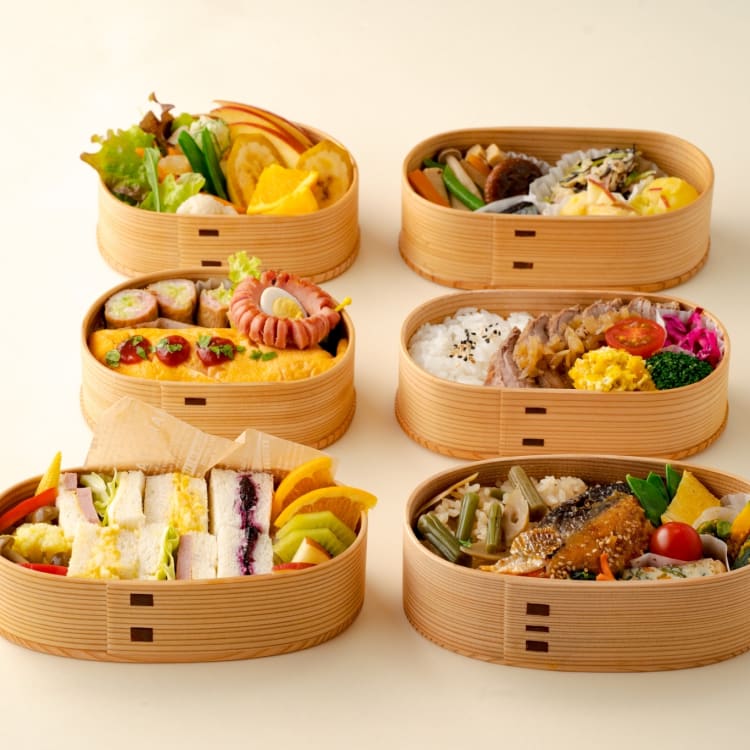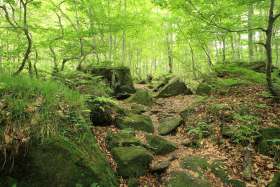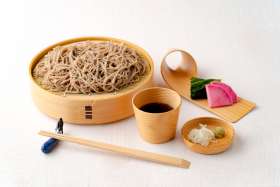
Story
A fragrant woodcraft from the cedar forests of Akita Prefecture
The artistry of Odate’s Magewappa
By JNTO On 8 February 2022
Japan is well-known for its centuries-old artistry and dedication to craftsmanship, which is evident in all forms of its crafts, from kimonos to ceramics and even traditional wooden lunchboxes. Japanese crafters excel in the art of creation, as the saying goes, practice makes perfect.


One such Japanese craft that has withstood the test of time is the magewappa. Made from the barks of cedar from the forests of the Shirakami Mountains (a World National Heritage site), magewappa are oval or round-shaped items like lunchboxes, salad bowls, steamers, trays, and many more. Constructed out of thinly shaved Japanese cedar, magewappa wares are known for their lightness, durability, beautiful grain, and fragrant aroma.
The origin of magewappa
The craft of magewappa can be traced back to Odate City in Akita prefecture, which is located on the east end of the Shirakami Mountains where cedar trees grow in abundance. Because of its ideal location for raw materials, Odate has over 400 years of history of crafting magewappa.


Magewappa is said to have been started by lumberjacks in the prefecture’s ancient forests and popularised in the 17th century by the Tokugawa shogunate stationed in Odate Castle to capitalize cedar in the region. Making magewappa was a cottage industry in Odate, and it’s said that even low-ranking samurai were ordered to produce the products as a sideline.
To make magewappa, a strong, flexible strip of Akita cedar with beautiful grain is peeled into thin strips before being steeped in hot water for 15 minutes to soften it. Then it’s bent to the product’s desired shape and dried for two days before it’s finally stitched together with wild cherry bark to secure it.
While most magewappa are uncoated, some artisans coat their wares with persimmon tannin and then paint it with Japanese lacquer which produces a deep reddish colour, called shibaki. This enhances the design and further complement the wood grain.
Today, the craft of magewappa is still being made using the same techniques that have been passed down through generations of Odate craftsmen.
Why is it so popular?
Odate’s magewappa is not just known for its beauty, but also its functionality – because cedar gently absorbs moisture, cooked rice that’s kept in a magewappa rice tub or bento box is able to maintain its freshness. Uncoated magewappa possesses a faint woody aroma that perfectly complements Japanese foods, especially when it comes to presenting foods like sushi.
In addition, natural Akita cedar possesses antibacterial properties, so it’s ideal for those who want not just authentic traditional craftware but also natural healthy products. A magewappa can also last a long time because it can be repaired if the joints are loose due to prolonged usage.


To ensure that every piece is perfect and unique, magewappa is only made from carefully selected logs, excluding those with knots or even slight discoloration. Those concerned with the ecological impact can rest easy; Akita prefecture’s district forestry office maintains a preservation area called the ”Magewappa Forest” where Japanese cedars have been planted, weeded, and pruned in the Shirakami Mountains for hundreds of years in order to protect the health of its environment for generations.
Making your own magewappa
Sleek and natural, magewappa handicrafts are growing in popularity around the world. These days, you can find traditional magewappa that’s uncoated or lacquered, as well as the more modern urethane-coated version which is easier to care for.


You can also try your hand at making your own original magewappa ware at the Odate Magewappa Cooperative (Odate Magewappa Kyodo Kumiai). Learn how to bend a piece of cedar after it’s been soaked in hot water, and then strap it together with cherry bark. In about an hour or two, you’ll have your very own magewappa plate, tray or bento box in your hands.
While we’re used to plastic wares filling up our homes, the feel of natural wood is definitely something special – once you’ve tried eating out of a wooden bento box, it may be hard to go back to plastic.
Odate Magewappa Kyodo Kumiai
Address: 70 Omachi, Odate-shi, Akita prefecture
Entry: Free
Workshop fees: 3,000 yen-5,000 yen
Opening hours: 9am to 5pm
Website: odate-magewappa.com (Japanese only)
















































